# 現代藝術modern art
Explore tagged Tumblr posts
Photo
Jean Arp (1886-1966), was a German-French sculptor, painter, and poet known as a founding member of Dadaism.
讓·阿爾普,德語名漢斯,德裔法國雕塑家、畫家和詩人。1916年參與達達主義運動,第一次世界大戰之後又與超現實主義者和表現主義者有著廣泛的交往。阿爾普主張藝術的完全自由,注重內在情感的表達。阿爾普延續了康斯坦丁·布朗庫西、查特金、赫西埃等人的道路,實現了雕塑的全面抽象化。
Period: Surrealism, Dadaism, Abstract art, Modern art
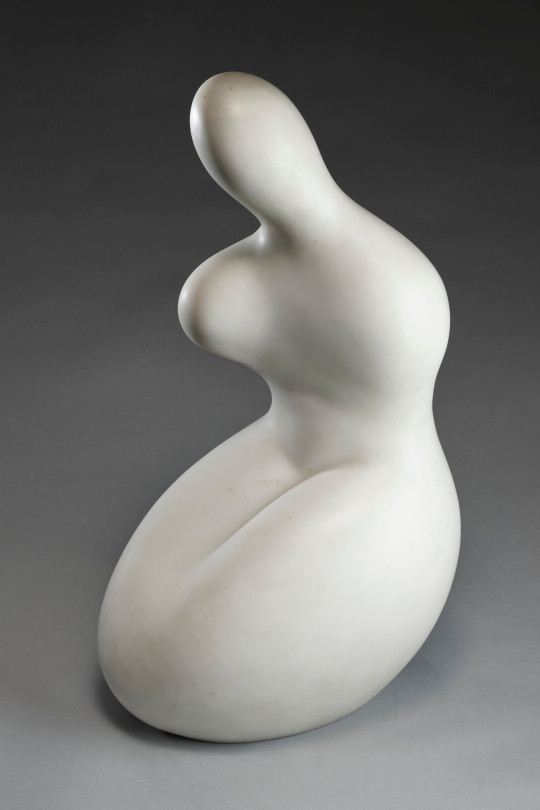
JEAN (HANS) ARP / “DÉMÉTER” / 1960 [white marble | height: 25 3/4″]
#jean (hans) arp#jean arp#german-french 1886-1966#白色大理石#sculpture#超現實主義surrealism# 達達主dadaism# 抽象藝術abstract art# 現代藝術modern art
229 notes
·
View notes
Text


















🍵 Tea time with good friend - Vivian / A enjoyment. 🍵🫶
現代的茶藝館相當流行用酒杯喝茶,其實我感覺格格不入~很怪! 😜😆 哈! It is quite popular in modern teahouses to drink tea from wine cups. In fact, I feel out of place ~ very strange! 😜😆 Ha! In fact, I insist on the beauty of culture and art, certain key features and characteristics should be preserved in tradition. 其實對文化和藝術之美感在我的思惟裡有份堅持,某些重點特色和特質應當保留傳統。
Lan~*
#chu lan#朱蘭皮藝#fine craft artist#leather art artist#beautiful life#taiwan artist city life#live eat love#daily life#tea coffee wine exhibition 2024/august in Kaohsiung taiwan
81 notes
·
View notes
Video
youtube
VIENNA - 現代藝術博物館的3個展示 3 presentations in Modern Arts Museum
This video collects 3 different presentations, one of which is a Basically live dance presentation created by young artists and dancers. The second is a love song produced by Visva-Bharati University in India and sung by a female singer. The third exhibit is an installation art called “Endless House” created by Austrian-born conceptual artist Friedrich Kiesler (1890-1965).
0 notes
Text
人生百態
H:「人生百態,世事無常。」有那百態?查查。
人生,活下去才是成功。
看盡人生百態,提供生存的勇氣。「 生病的時候,自己要重視自己,不能等著哪個誰來重視你。等到那時候,你會發現自己不管是身體還是心靈都已經很難受了。」參透人生百態,是聖人。一般人看盡人生百態,活著就是最大成功,萬事隨緣最好。20250123W4
網路字典
一樣米飼百樣人。
釋義
一種米養百種人。人的食物差異不大,但人的個性千差萬別。比喻這個社會上有著各式各樣、形形色色的人。
第1項釋義的用例:
平平是人,有的人恬恬做��代;有的人想空想縫欲害人,有影是「一樣米飼百樣人」,啥物款人都有。
形形色色
形形,生成形體。色色,生成顏色。語本《列子.天瑞》:「有形者,有形形者;有聲者,有聲聲者;有色者,有色色者。」形容各色各樣,種類很多。清.葉燮《原詩.卷二.內篇下》:「凡形形色色,音聲狀貌,舉不能越乎此。」
聖嚴法師:「當我們在面對是與非、正面或負面、逆境或順境的時候,都要心平氣和地去接受,如果能夠做到,至少可讓自己少受傷害。」人生百態,看待每件事情就像看著一顆球似的,有著千百種面向,端看你從那一個角度去解讀。不同的解讀面向,也會為自己帶來不同的心理感受。
網路資料:
人生百態,形形色色的人和事,讓我們逐漸看清了這個世界。
人類狀況可以定義為人類生命的特徵和關鍵事件,包括出生、學習、情感、抱負、理性、道德、衝突和死亡。這是一個非常廣泛的主題,已經並將繼續從許多角度進行思考和分析,包括藝術、生物學、文學、哲學、心理學和宗教。 作為一個文學術語,「人類狀況」通常用於含糊不清的主題,例如生命的意義或道德問題。
... 维基百科(英文)
Human condition
Ultimate concerns of human existence
For other uses, see Human condition (disambiguation).
The human condition can be defined as the characteristics and key events of human life, including birth, learning, emotion, aspiration, reason, morality, conflict, and death. This is a very broad topic that has been and continues to be pondered and analyzed from many perspectives, including those of art, biology, literature, philosophy, psychology, and religion.

This painting, with symbols of life, death, and time, is an example of memento mori art.
As a literary term, "human condition" is typically used in the context of ambiguous subjects, such as the meaning of life or moral concerns.
Some perspectives
Each major religion has definitive beliefs regarding the human condition. For example, Buddhism teaches that existence is a perpetual cycle of suffering, death, and rebirth from which humans can be liberated via the Noble Eightfold Path. Meanwhile, many Christians believe that humans are born in a sinful condition and are doomed in the afterlife unless they receive salvation through Jesus Christ.
Philosophers have provided many perspectives. An influential ancient view was that of the Republic in which Plato explored the question "what is justice?" and postulated that it is not primarily a matter among individuals but of society as a whole, prompting him to devise a utopia. Two thousand years later René Descartes declared "I think, therefore I am" because he believed the human mind, particularly its faculty of reason, to be the primary determiner of truth; for this he is often credited as the father of modern philosophy. One such modern school, existentialism, attempts to reconcile an individual's sense of disorientation and confusion in a universe believed to be absurd.
Many works of literature provide a perspective on the human condition. One famous example is Shakespeare's monologue "All the world's a stage" which pensively summarizes seven phases of human life.
Psychology has many theories, including Maslow's hierarchy of needs and the notions of identity crisis and terror management. It also has various methods, e.g. the logotherapy developed by Holocaust survivor Viktor Frankl to discover and affirm a sense of meaning. Another method, cognitive behavioral therapy, has become a widespread treatment for clinical depression.
Charles Darwin established the biological theory of evolution, which posits that the human species is related to all others, living and extinct, and that natural selection is the primary survival factor. This led to subsequent beliefs, such as social Darwinism, which eventually lost its connection to natural selection, and theistic evolution of a creator deity acting through laws of nature, including evolution.
See also

Look up human condition in Wiktionary, the free dictionary.
Human nature
Know thyself
References
About this article
View edit history
Updated 111 days ago
View talk page
Discuss improvements to this article
星雲大師各種人生:
一、有好有壞:
二、有文有武:
三、有聚有散:。
四、有得有失:
五、有捨有貪:
六、有苦有樂:
七、有榮有辱:
八、有閒有忙:
九、有喜有怒:
十、有成有敗:
總說人生百態,有人好名,有人好財,有人好利,有人好義,有人好表現,有人好隱藏,有人喜歡群聚,有人歡喜獨居。
一個人生活雖然很難,
但也必須學會一個人,不���輕易依賴別人。
這是為了防止你身邊的人都離開的時候,
你還可以好好活下去。
生病的時候,自己要重視自己,不能等著哪個誰來重視你。等到那時候,
你會發現自己不管是身體還是心靈都已經很難受了。
那些死亡教我如何活:一位清掃死亡現場者20年的生死思索
特殊清掃:死体と向き合った男の20年の記録
作者:特掃隊長
譯者: 莊雅琇
語言:繁體中文
出版社:時報出版
出版日期:2016/06/21
內容簡介
人似乎要站在死亡面前,才看得清生命的輕重!
25個死亡房間,25個一輩子受用的人生啟示。
清掃死亡現場,一個最接近生命真相的工作。
每個房間故事,都是你梳理人生的契機!
這些死亡將帶你看清什麼是人生最重要的事!
近距離接觸遺體的清理師二十年全紀錄,
親筆寫下每個房間的人生故事和生死思索!
在清理有形之物的過程中,許多無形之物也隨之浮現,
透過「死亡」,悟出「生存」真意的生命書寫!
別為死亡哀傷,它會告訴我們許多事!
什麼是生?什麼是死?
什麼是人生最重要的事?
什麼事值得我們窮盡一生追求?
人生該如何抉擇,才不會走向孤獨死?
我們很可能花一輩子思索也無法透澈其中,
但若真實地站在死亡面前,答案或許就會清晰可見。
25個房間,25個動人的生命故事,
有生命掙扎、有溫暖人情、有遺憾嘆息,
這些死亡將給你前所未有震撼性的生命體悟和人生力量!
死亡現場,不是只有無盡黑暗和淚水,
它是看清人生的鏡子,湧現生命力量的地方!
清掃死亡現場,不只是清理有形之物,也是一次次生命的重整!
經歷一場奇妙的旅程吧!
進入高級住宅準備清掃自殺現場,死者竟是他崇拜許久的朋友;正要動手清掃人人避之唯恐不及的孤獨死房間,死者的父親竟然不畏駭人景象,捲起袖子一起清掃;帶著哀戚來到喪家,看到的竟然是小孩滿場飛奔嬉鬧、大人們熱絡聊天,完全不見葬禮沉重的氣氛……。
本書是一位從事死亡現場清理工作者20年的生命思索和人生體悟,他將工作中所見所思化成文字,與世人分享他因這份獨特工作而獲得的生命體悟。在一次次面對不堪但必然的生命結局後,他漸漸知曉生命無常的本質,也發現他的工作不只是單純的清掃,而是消除死亡的痕跡,為在世者建構重新出發的勇氣,將死轉化為生的奇妙旅程。他所清掃的每個房間都有個動人的人生故事,也是一次生死的思索。人似乎要站在死亡面前,才看得清生命的輕重。
名人推薦
精神科醫師 王浩威、專欄作家 周偉航、台灣病友聯盟理事長 楊志良、《每天來點負能量》作者 鍵人 感動推薦
收回
目錄
前言 與死奮戰的人
第一章愛
01夢的痕跡
02為愛的人做的最後一件事
03最珍貴的禮物是回憶
04笑著說再見
05記得愛的初衷
第二章希望
06智慧的年輪
07人生好好活一次就夠了
08別成為外鮮內腐的人
09死是另一個開始
第三章勇氣
10 面對才能看見太陽
11 盡力完賽就是贏家
12 那些奮鬥過的痕跡
13 破殼就能看見世界的光
14人生這場賭局
15戒除想像的依賴
16為美麗人生血鬥
17願為一個笑而奮力
18心態改變眼裡的風景
19可怕的是懼低症,而非懼高症
第四章感謝
20值得一輩子惦記的真情
21感恩就能向前
22一期一会
23記得我們終將死去
24喜人之所喜,悲人之所悲
25留下美麗的靈魂
結語 我們一輩子的人生功課
解説 生死的界線 解剖專家 養老孟司
序
推薦文
人生,活下去才是成功
《每天來點負能量》作者鍵人
我一直有寫遺書的習慣。
大約是從大學開始的某天開始,我覺得該寫點什麼,給我身邊的人,但我又不好意思直接的說。於是我寫下來,避免這些話沒有機會說。我聽說某些職業在出任務前也都會習慣寫遺書,為自己留下點話。這是個很好的習慣。
寫一次遺書,就梳理一次自己的人生。我們的人生,應該經常梳理。
我覺得世界上有兩種人最勇敢,第一種人不顧旁人眼光做自己的人,但我目前沒遇過這種人,大家都只是嘴上說說而已。第二種人就是一直認真活著的人。這種人,我倒是很常見到。
我一直認為,活著是一件不容易的事,尤其在這個時代,活著除了要有一堆現實條件去支撐之外,還會有人一直來問���活著的意義是什麼?人生的意義是什麼之類的話。
生命,活著本身就是意義。活著,本身就是種精彩。
這本書很直接的面對到許多死亡場景,閱讀的時候,感覺一次又一次的在梳理自己的人生,關於愛、感情與物質,還有我們看不見的眼淚等,以及這些死亡之中,我們所看到的生命本身的價值。
藉著了解死亡,我們能更認真的活著,不論是沒有夢想也好,不論是行屍走肉也好,關於活著的意義,我們可以沒有,但不能沒有活著。
人生,活��去才是成功。
許多人都看過或被問過這樣的一個問題:「如果明天你就要死了,你今天會做什麼?」我是這樣回答的:「跟家人吃完飯,然後坐下來寫東西,直到死去。」聽起來很平凡無奇的答案,但事實上死亡就是一種平凡,而且是最平凡的那種,就好像生日一樣,每一個人都有,也都會遇到。
死亡很平凡,好好過著今天就是。
書裡的一段我很喜歡:「每個人都有早已寫下結局的命運與宿命。生命裡的一切皆是必然,沒有偶然。我們選擇的路是如此,生命的盡頭也是如此。並非跑完漫長的人生歲月、自然老死才算是跑完全程。不論是意外死去或是年輕早逝,都是完賽。儘管短暫得令人惋惜,但都不是輸家。那些早逝的生命絕不比任何完賽者遜色,沒有必要為他們嘆息。…人皆有死,最重要的是用自己的姿態跑完人生。而死前那最後一抹淺笑是跑完人生路程的滿足,無關任何勝負。」
我們終究會死,不論你知不知道那一天的到來,也正因為如此,你每一天都不該做出讓自己後悔的事。因為很有可能,你沒有這後悔的機會。大多數人有各種活著的方式與特色,但是每個人的死亡卻都是差不多的。重要的是我們留給身邊的人是什麼?
時常梳理你的人生,踏實的過著每一天,這世界來都來了,不如玩久一點吧。不用擔心死了怎麼辦,你該擔心明天該怎麼繼續活著。
閱讀死亡,讓我們更像是活著。
中國文化的定義
在中國文化中,對人的本性,大致有四種觀點:
人性本善論,以儒家孟子為代表。《三字經》開篇即為「人之初,性本善,性相近,習相遠」。
人性本惡論,以儒家荀子為代表,有「人之性惡,其善偽也」。「性者,本始材朴」。的論斷。
人性無善無惡論,代表人物為告子,他認為人性無善無不善,「生之謂性」,「食色,性也」[5]。
人性既善��惡,代表人物是西漢的揚雄,他認為「人之性也,善惡混。修其善則為善人,修其惡則為惡人」[6]。
冰鑑:識人術第一奇書
作者:曾國藩 , 盛琳
語言:繁體中文
出版社:海鴿
出版日期:2020/02/05
內容簡介
■ 比面相學更準確的識人術!
《冰鑑》曾絕跡幾十年,近年來被整理問市,受到讀者青睞。本書集中國歷代識人學之大成,是中國古代相術流派中「書房派」的代表作。它和江湖上流傳的相書不同之處就在於重神而兼形,特別強調人的精神。
■ 從政、經商者,必備的智謀寶典!
曾國藩是每個渴望成功的人應該學習的對象,據說曾國藩但凡用人,必先看其相。當今社會,人際往來互動頻繁,要在短時間內,從一個人的身形、言談、舉止,去評斷一個人方法有很多種。但是,無論是從面相學、心理學的各種角度,都不是普通人容易學得會的。在講求效率的年代裡,只要掌握《冰鑑》七項要訣,即可識人用人。
毛澤東說:他一生只服過一個人,那個人就是曾國藩,蔣介石過去在安排重要人事時,就是用曾國藩的識人術來觀察其相貌顏色,以決定用否。其子,蔣緯國在擔任三軍大學校長期間,將該書指定為學生的重要參考書。一個人最大的本事是能用人,用人首先要識人。由此,可證《冰鑑》,乃立身處世、縱橫職場的不二法門。
看更多
目錄
前言:從身體語言看透對方,不為人知的一面
第一卷 以形觀骨,以骨觀德——神骨鑑
第二卷 既識神骨,當辨剛柔——剛柔鑑
第三卷 姿容相貌,盡觀個性 ——容貌鑑
第四卷 相人之要,情態為先——情態鑑
第五卷 早眉晚鬚,勿失於呆——鬚眉鑑
第六卷 以音觀識,以聲觀形——聲音鑑
第七卷 以氣觀志,以色觀人——氣色鑑
看更多
序
前言
從身體語言看透對方,不為人知的一面
據說曾國藩,但凡用人,必先看其相。當今社會,人際往來互動頻繁,要在短時間內,從一個人的身形、言談、舉止,去評斷一個人方法有很多種。但是,無論是從面相學、心理學的各種角度,都不是普通人容易學得會的。
在講求效率的年代裡,只要掌握《冰鑑》七項要訣,即可識人用人。蔣介石過去在安排重要人事時,就是用曾國藩的識人術來觀察其相貌顏色,以決定用否。其子,蔣緯國在擔任三軍大學校長期間,將該書指定為學生的重要參考書。一個人最大的本事是能用人,用人首先要識人。由此,可證《冰鑑》,乃立身處世、縱橫職場的不二法門。
透過「眼神」辨人心,一個人最容易被他人看穿的也是眼神,在心理學中講的心靈透視,就是從眼神裡探究出一個人的心性、成就高低等。
在日常生活中,若能經常對他人表示關懷,付出愛心,以善意對人或事,在長期的培養之下,自然就會流露出關愛的眼神。如果一天到晚存心算計他人,��妒怨恨,眼神必會常露凶光,令人害怕。眼神是人的行為語言最富個性特徵的表現,因此透過眼睛可以準確把握人的精神世界。
《冰鑑》和江湖上流傳的相書不同之處就在於重神而兼形,特別強調人的精神和氣質。除了能讓你懂得觀人術之外,同時更可用來改善自我形象——如應對進退時的眼神、態度、聲音、儀態…等等,應該如何做那些改善?本書乃是個人形象改造最佳工具書。
維基 -> 冰鑒 -> 冰鑒
《冰鑒》[查看正文] [修改] [查看歷史]
1 
冰鑑4 
神骨章第一5 
語云:"脫穀為糠,其髓斯存",神之渭也。"山騫不崩,惟石為鎮",骨之謂也。一身精神,具乎兩目;一身骨相,具乎面部。他家兼論形骸,文人先觀神骨。開門見山,此為第一。6 
文人論神,有清濁之辨。清濁易辨,邪正難辨。欲辨邪正,先觀動靜;靜若含珠,動若水發;靜若無人,動若赴的,此為澄清到底。靜若螢光,動若流水,尖巧而喜淫;靜若半睡,動若鹿駭,別才而深思。一為敗器,一為隱流,均之託跡於清,不可不辨。7 
凡精神,抖擻處易見,斷續處難見。斷者出處斷,續者閉處續。道家所謂"收拾入門"之說,不了處看其脫略,做了處看其針線。小心者,從其不了處看之,疏節闊目,若不經意,所謂脫略也。大膽者,從其做了處看之,慎重周密,無有苟且,所謂針線也。二者實看向內處,稍移外便落情態矣,情態易見。8 
骨有九起:天庭骨隆起,枕骨強起,頂骨平起,佐串骨角起,太陽骨線起,眉骨伏犀起,鼻骨芽起,顴骨若不得而起,項骨平伏起。在頭,以天庭骨、枕骨、太陽骨為主;在面,以眉骨、顴骨為主。五者備,柱石之器也;一則不窮;二則不賤;三則動履稍勝;四則貴矣。9 
骨有色,面以青為貴,"少年公卿半青面"是也。紫次之,白斯下矣。骨有質,頭以聯者為貴。碎次之。總之,頭上無惡骨,面佳不如頭佳。然大而缺天庭,終是賤品;圓而無串骨,半是孤僧;鼻骨犯眉,堂上不壽。顴骨與眼爭,子嗣不立。此中貴賤,有毫釐千里之辨。10 
第二剛柔11 
既識神骨,當辨剛柔。剛柔,則五行生剋之數,名曰"先��種子",不足用補,有餘用洩。消息與命相通,此其較然易見者。12 
五行有合法,木合火,水合木,此順而合。順者多富,即貴亦在浮沉之間。金與火仇,有時合火,推之水土者皆然,此逆而合者,其貴非常。然所謂逆合者,金形帶火則然,火形帶金,則三十死矣;水形帶土則然,土形帶水,則孤寡終老矣;木形帶金則然,金形帶木,則刀劍隨身矣。此外牽合,俱是雜格,不入文人正論。13 
五行為外剛柔,內剛柔,則喜怒、跳伏、深淺者是也。喜高怒重,過目輒忘,近"粗"。伏亦不伉,跳亦不揚,近"蠢"。初念甚淺,轉念甚深,近"奸"。內奸者,功名可期。粗蠢各半者,勝人以壽。純奸能豁達,其人終成。純粗無周密,半途必棄。觀人所忽,十有九八矣。14 
第三容貌15 
容以七尺為期,貌合兩儀而論。胸腹手足,實接五行;耳目口鼻,全通四氣。相顧相稱,則福生;如背如湊,則林林總總,不足論也。16 
容貴"整","整"非整齊之謂。短不豕蹲,長不茅立,肥不熊餐,瘦不鵲寒,所謂"整"也。背宜圓厚,腹宜突坦,手宜溫軟,曲若彎弓,足宜豐滿,下宜藏蛋,所謂"整"也。五短多貴,兩大不揚,負重高官,鼠行好利,此為定格。他如手長於身,身過於體,配以佳骨,定主封侯;羅紋滿身,胸有秀骨,配以妙神,不拜相即鼎甲矣。17 
貌有清、古、奇、秀之別,總之須看科名星與陰騭紋為主。科名星,十三歲至三十九歲隨時而見;陰騭紋,十九歲至四十六歲隨時而見。二者全,大物也;得一亦貴。科名星見於印堂眉彩,時隱時見,或為鋼針,或為小丸,嘗有光氣,酒後及發怒時易見。陰騭紋見於眼角,陰雨便見,如三叉樣,假寐時最易見。得科名星者早榮,得陰騭紋者遲發。二者全無,前程莫問。陰騭紋見於喉間,又主生貴子;雜路不在此路。18 
目者面之淵,不深則不清。鼻者面之山,不高則不靈。口闊而方祿千種,齒多而圓不家食。眼角入鬢,必掌刑名。頂見於面,終司錢穀:出貴徵也。舌脫無官,橘皮不顯。文人有傷左目,鷹鼻動便食人:此賤徵也。19 
第四情態20 
容貌者,骨之餘,常佐骨之不足。情態者,神之餘,常佐神之不足。久注觀人精神,乍見觀人情態。大家舉止,羞澀亦佳;小兒行藏,跳叫愈失。大旨亦辨清濁,細處兼論取舍。21 
有弱態,有狂態,有疏懶態,有周旋態。飛鳥依人,情致婉轉,此弱態也。不衫不履,旁若無人,此狂態也。坐止自如,問答隨意,此疏懶態也。飾其中機,不苟言笑,察言觀色,趨吉避凶,則周旋態也。皆根其情,不由矯枉。弱而不媚,狂而不嘩,疏懶而真誠,周旋而健舉,皆能成器;反之,敗類也。大概亦得二三矣。22 
前者恒態,又有時態。方有對談,神忽他往;眾方稱言,此獨冷笑;深險難近,不足與論情。言不必當,極口稱是,未交此人,故意底毀;卑庸可恥,不足與論事。漫無可否,臨事遲回;不甚關情,亦為墮淚。婦人之仁,不足與談心。三者不必定人終身。反此以求,可以交天下士。23 
第五鬚眉24 
"須眉男子"。未有須眉不具可稱男子者。"少年兩道眉,臨老一付須。"此言眉主早成,鬚主晚運也。然而紫面無鬚自貴,暴腮缺鬚亦榮:郭令公半部不全,霍膘驍一副寡臉。此等間逢,畢竟有須眉者,十之九也。25 
眉尚彩,彩者,杪處反光也。貴人有三層彩,有一二層者。所謂"文明氣象",宜疏爽不宜凝滯。一望有乘風翔舞之勢,上也;如潑墨者,最下。倒豎者,上也;下垂者,最下。長有起伏,短有神氣;濃忌浮光,淡忌枯索。如劍者掌兵權,如帚者赴法場。個中亦有徵範,不可不辨。但如壓眼不利,散亂多憂,細而帶媚,粗而無文,是最下乘。26 
鬚有多寡,取其與眉相稱。多者,宜清、宜疏、宜縮、宜參差不齊;少者,宜光、宜健、宜圓、宜有情照顧。卷如螺紋,聰明豁達;長如解索,風流榮顯;勁如張戟,位高權重;亮若銀條,早登廊廟,皆宦途大器。紫鬚劍眉,聲音洪壯;蓬然虯亂,嘗見耳後,配以神骨清奇,不千里封侯,亦十年拜相。他如"輔須先長終不利"、"人中不見一世窮"、"鼻毛接鬚多滯晦"、"短斃遮口餓終身",此其顯而可見者耳。27 
第六聲音28 
人之聲音,猶天地之氣,輕清上浮,重���下墜。始於丹田,發於喉,轉於舌,辨於齒,出於唇,實與五音相配。取其自成一家,不必一一合調,聞聲相思,其人斯在,寧必一見決英雄哉!29 ��
聲與音不同。聲主"張",尋發處見;音主"斂",尋歇處見。辨聲之法,必辨喜怒哀樂;喜如折竹,怒如陰雷起地,哀如擊薄冰,樂如雪舞風前,大概以輕為上。聲雄者,如鐘則貴,如鑼則賤;聲雌者,如雉鳴則貴,如蛙鳴則賤。遠聽聲雄,近聽悠揚,起若乘風,止如拍琴,上上。"大言不張唇,細言不露齒",上也,出而不返,荒郊牛鳴。急而不達,深夜鼠嚼;或字句相聯,喋喋利口;或齒喉隔斷,喈喈混談:市井之夫,何足比較?30 
音者,聲之餘也,與聲相去不遠,此則從細曲中見耳。貧賤者有聲無音,尖巧者有音無聲,所?quot;禽無聲,獸元音"是也。凡人說話,是聲散在前後左右者是也。開談多含情,話終有餘響,不唯雅人,兼稱國士;口闊無溢出,舌尖無窕音,不唯實厚,兼獲名高。31 
第七氣色32 
面部如命,氣色如運。大命固宜整齊,小運亦當亨泰。是故光焰不發,珠玉與瓦礫同觀;藻繪未揚,明光與布葛齊價。大者主一生禍福,小者亦三月吉凶。33 
人以氣為主,於內為精神,於外為氣色。有終身之氣色,"少淡、長明、壯艷、老素"是也。有一年之氣色,"春青、夏紅、秋黃、冬白"是也。有一月之氣色,"朔後森發,望後隱躍"是也。有一日之氣色,"早青、晝滿、晚停、暮靜"是也。34 
科名中人,以黃為主,此正色也。黃雲蓋頂,必掇大魁;黃翅入鬢,進身不遠;印堂黃色,富貴逼人;明堂素淨,明年及第。他如眼角霞鮮,決利小考;印堂垂紫,動獲小利,紅暈中分,定產佳兒;兩顴紅潤,骨肉發迹。由此推之,足見一斑矣。35 
色忌青,忌白。青常見於眼底,白常見於眉端。然亦不同:心事憂勞,青如凝墨;禍生不測,青如浮煙;酒色憊倦,白如臥羊;災晦催人,白如傅粉。又有青而帶紫,金形��之而飛揚,白而有���,土庚相當亦富貴,又不在此論也。最不佳者:"太白夾日月,烏鳥集天庭,桃花散面頰,預尾守地閣。"有一於此,前程退落,禍患再三矣。
0 notes
Text
「斯洛伐克現代藝術展」南臺灣首展! 台南遠東香格里拉2024給您品味歐洲藝術魅力與精緻下午茶
為紀念象徵團結與和平精神的絲絨革命35週年,斯洛伐克經濟文化辦事處特於台南遠東香格里拉飯店獨家舉辦「斯洛伐克現代藝術展 Slovak Modern Art Exhibition」。即日起至12月1日,飯店一樓大廳展出精選作品,涵蓋攝影、雕塑及壓克力繪畫三大領域,帶領民眾深入體驗斯洛伐克當代藝術的文化精髓!
為紀念象徵團結與和平精神的絲絨革命35週年,斯洛伐克經濟文化辦事處特於台南遠東香格里拉飯店獨家舉辦「斯洛伐克現代藝術展 Slovak Modern Art Exhibition」。即日起至12月1日,飯店一樓大廳展出精選作品,涵蓋攝影、雕塑及壓克力繪畫三大領域,帶領民眾深入體驗斯洛伐克當代藝術的文化精髓! 為了提升觀展體驗,台南遠東香格里拉飯店特別於展覽期間在大廳茶軒推出「藝術下午茶」服務。大廳茶軒以優雅的空間設計與精緻茶點聞名,提供當季手工甜點與經典茶品,營造沉靜愉悅的氛圍。觀眾可在享用下午茶時,欣賞周邊展示的斯洛伐克當代藝術作品,體現「藝術與美食共存」的概念,讓賓客在視覺與味覺的雙重饗宴中,悠然漫步於歐洲藝術的核心,感受獨特的文化之旅。 斯洛伐克現代藝術展亮點: 這場展覽匯聚了三位斯洛伐克當代藝術家——Jana Fašungová、Peter Baran 及 Luka…
0 notes
Text

展覽 - Calder: in Motion, The Shirley Family Collection
“Set modern art in motion.”
沒有想過能在西雅圖看到這位美國當代藝術家Alexander Calder的作品展覽,這次在西雅圖美術博物館展出私人珍藏Calder 四十五件由20年代至70年代的作品。
運動中的現代藝術,又或者是藝術品在運行中不斷變化,光影、形狀、時間變化出不同形態,有規律但又沒有規律,非常精彩,有些作品原來比想像中大,能夠一看實體,非常驚喜。
若果這段展覽時間你在西雅圖,請務必前來觀看。
日期:即日至2024年10月20日
時間:10:00 - 17:00 (逢星期一、二閉館)
費用:USD$29.99成人(基本收費,但有不同入場費優惠,詳情請參閱網站。)
地址:1300 First Avenue, Seattle, WA 98101
展覽詳情:
https://calder.site.seattleartmuseum.org
0 notes
Text

📢🎨 Venez découvrir l'exposition de Nicole Azoulay au Tokyo Metropolitan Art Museum du 9 au 16 septembre 2024 ! 🌟🎨 Organisée par la galerie Beauté du matin calme à Paris, cette exposition exceptionnelle vous permettra d'apprécier le talent de l’artiste peintre internationale Nicole Azoulay dans le cadre prestigieux de l’un des plus célèbres musées d’art moderne du Japon. Ne manquez pas cette occasion unique de plonger dans l'univers artistique de Nicole Azoulay ! ✨ #ExpositionNicoleAzoulay #TokyoArtMuseum #ArtContemporain #BeautéDuMatinCalme #ParisTokyo #artdesannonces 🖼️📅 9-16 septembre 2024 📍 Tokyo Metropolitan Art Museum, Ueno Park, Tokyo, Japon Pour plus d’informations, suivez-nous ! 🌐
📢🎨 2024年9月9日から16日まで、東京藝術大学美術館で開催されるニコール・アズーレイの展示会にお越しください!🌟🎨 この特別な展示会は、��リのギャラリー「朝の静けさの美」によって企画され、国際的な画家ニコール・アズーレイの才能を日本の有名な現代美術館のひとつである東京藝術大学美術館の素晴らしい環境で鑑賞することができます。 ニコール・アズーレイの芸術の世界に浸るこの貴重な機会をお見逃しなく!✨ #ExpositionNicoleAzoulay #TokyoArtMuseum #ArtContemporain #BeautéDuMatinCalme #ParisTokyo #artdesannonces 🖼️📅 2024年9月9日〜16日 📍 東京藝術大学美術館、上野公園、東京、日本 詳細については、フォローしてください!🌐
0 notes
Text
那些不願模仿任何事物的人,是生不出任何作品的。
Those who do not want to imitate anything, produce nothing.
— Salvador Dalí
( thought-provoking. Is not it? Lan~*)
about AI Art
我認為沒有必要仇視和敵對於"AI Works of Art",除非你完全不必與現代人的生活與生存環境接軌,你也不用3C/5G產品(your smartphones),可能你需要瞭解更多的關於這新時代的事實,即使我們是仍舊用雙手在創作的藝術家們。Lan~* and 這篇文章可以參考 :
The Purity Police and AI Art By Mark Dixon 10.25.2023
I think there is no need to be hostile and hate to "AI Works of Art", unless you don't have to be in line with modern people's life and living environment, and you don't use 3C/5G products (your smartphones), maybe you need to know more about this The fact of the new era, even though we are artists who still use our hands to create. Lan~* You can refer to this article:
The Purity Police and AI Art By Mark Dixon 10.25.2023 🙏 Thanks!
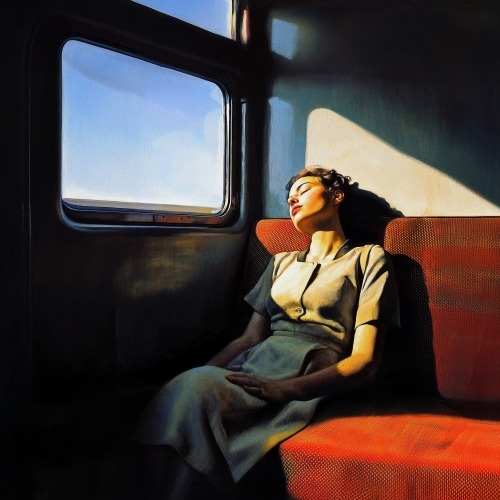
Louis Servedio Morales
#louis servedio morales#louis calls himself a digital creator#ai art#inspired by edward hopper... and so on#salvador dalí#thank you
100 notes
·
View notes
Text
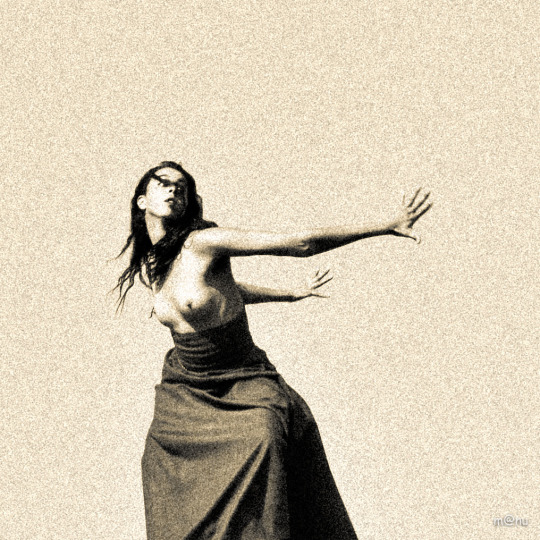
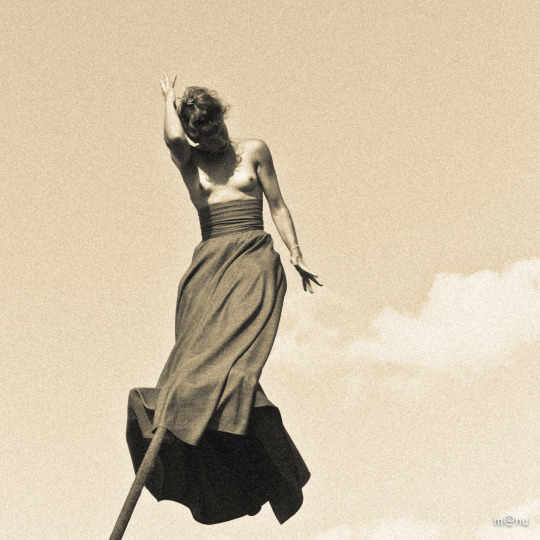
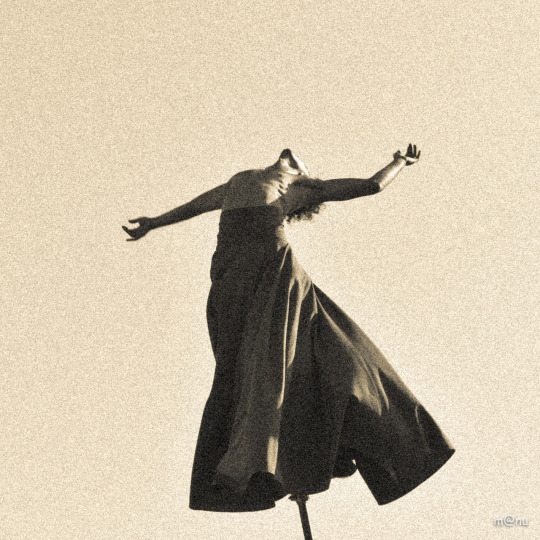

Performance art表演藝術 || 現代舞modern dance performance tension
here @fenetre-sur
215 notes
·
View notes
Text
瑞士畫家,插畫家,圖形藝術家和雕塑家。作為首位優先考慮構圖色彩的瑞士畫家,他是���士現代藝術的先驅。He was a Swiss painter, illustrator, graphic artist and sculptor. As the first Swiss painter to give precedence to colour in composition, he was a pioneer of modern art in Switzerland.

Cuno Amiet, Paradies, 1958.
461 notes
·
View notes
Video
youtube
VIENNA-Leopold Museum 2024 Exhibition-Master Pieces 當年重要畫作展
這是2004年我訪遊時,所拍的館藏重要藝術作品。大部分是繪畫作品,其中有最受矚目的Klimt的作品。也有現代音樂的第二維也納樂派創始者:Schoenberg的自畫像等。These are some important works of art in the museum's collection that I took when I visited in September 2004. Most of them are paintings, among which the most notable are works by Klimt. There is also a self-portrait of Schoenberg, the founder of the Second Viennese School of modern music.
1 note
·
View note
Text
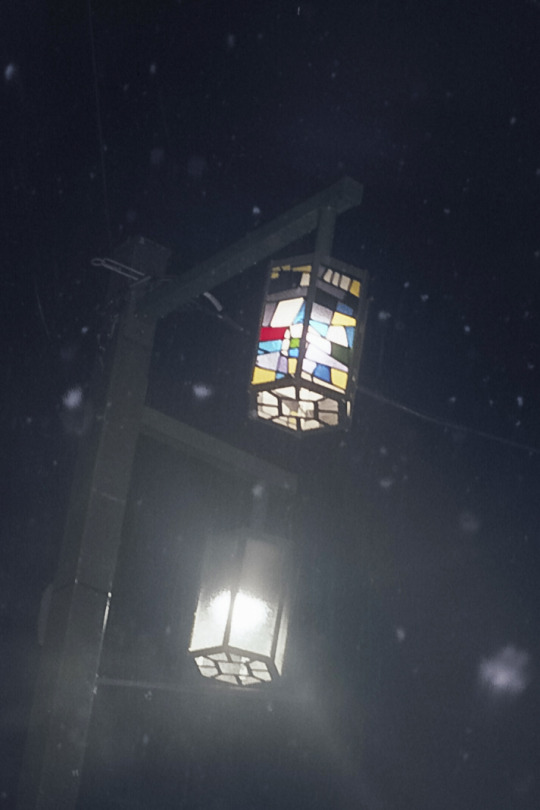
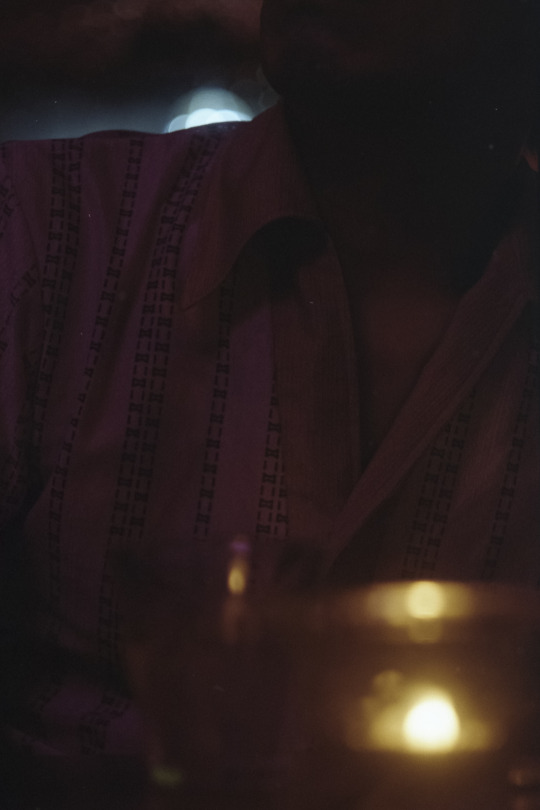
I think that only 3% of the world's population are called artists, but for many people, in addition to food, clothing and housing, art is not something they can't live without. I sometimes think that because art is a tranquiliser that heals invisible illnesses, it does not disappear and that those who need it are healed by taking the art they need, and in this way the role of the artist is naturally revealed.
作家と呼ばれる人は世界人口の3%程度だと思うのですが、衣食住の他、多くの人にとってアートはなきゃ生きていけないわけではなく、歴史や文脈、場所や扱い方によって、なんでもアートになり得る故にアートは必要があるない問わずに脈々と続いていくのですがね。それは見えない病を癒す精神安定剤だから無くならずに必要な人が必要なアートをテイクして癒されているのではないのかなどと思ったりもしているわけで、そうすると作家の役割というのは自ずと炙り出されているように思うわけです。
0 notes
Photo

日前去參觀Gerhard Richter在東京的展覽。這位德國視覺藝術家,今年高齡90歲,身為畫價最高的在世畫家之一,他的作品充滿多變的風格:浪漫主義、攝影現實主義、抽象表現主義、極簡主義、構成主義與普普藝術等。 生於亂世,他的作品總讓人有種介於說與不說之間的欲言又止,想抹除主觀、低調而隱晦,讓觀者自行去衍生意象、蔓延情緒。 他的作品不走譁眾取寵路線,瀏覽玩味後卻讓人留有深遠的餘韻。 #art #gerhardrichter #exhibition #美術館巡り #美術館好きな人と繋がりたい (at 東京国立近代美術館|The National Museum of Modern Art, Tokyo) https://www.instagram.com/p/CjaduO4vLZPzSbE-C3DNQQJQl6A7j9cDFJcOU00/?igshid=NGJjMDIxMWI=
4 notes
·
View notes
Photo

【展訊】 2019.2.14-3.8 寶勝畫廊 (台北)X-Power Gallery https://www.facebook.com/artrevolutiontaipei/ 展出: Zofia Pałucha (波蘭) Catrin Welz-Stein (德國) Alicja Słaboń Urbaniak (波蘭) Maciej Urbaniak (波蘭) MTPV Satyanarayana (印度) Anthony Saarlouis (德國) Anna Wypych (波蘭) Jacques Tange (荷蘭) Peter Richard Winkelaar (荷蘭) Giuseppe Sticchi (義大利) #台北新藝術博覽會 #ART #artrevolutiontaipei #當代藝術#現代藝術#裝置藝術 #油畫#壓克力#雕塑 #水彩#複合媒材 # Oil# Acrylic# Bronze# Mixed Media# Watercolor #Contemporary#Modern Art # sculpture #台北 #Taipei #Taiwan https://www.instagram.com/p/Bt2UzaSlOAW/?utm_source=ig_tumblr_share&igshid=abjsdepuv8yu
#台北新藝術博覽會#art#artrevolutiontaipei#當代藝術#現代藝術#裝置藝術#油畫#壓克力#雕塑#水彩#複合媒材#contemporary#modern#台北#taipei#taiwan
0 notes
Photo

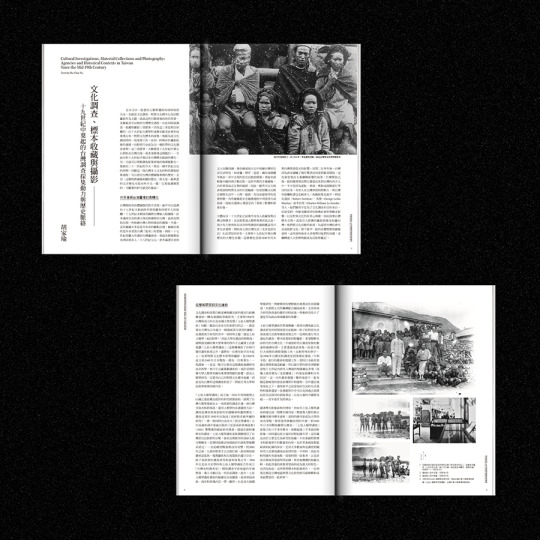

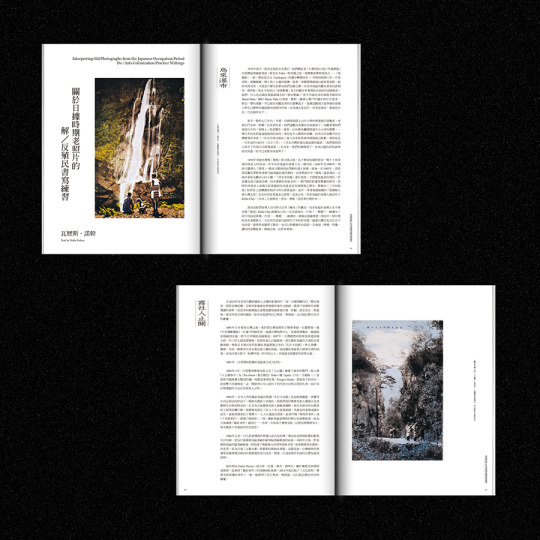



Voices of Photography 攝影之聲 Issue 29 : 被攝影史──成為影像的台灣 History of the Photographed: Taiwan as an Image
延續我們對於攝影史的關���,本期審視屬於我們自身的攝影經驗──被攝影的歷史。從台灣的殖民史出發,自十九世紀中葉以降歷經的人類學調查採集、二十世紀初隘勇線推進下的暴力顯影,到帝國博覽會裡的「台灣」意象與人種展示──這是一段最為系統性地將台灣影像化的初始時期。我們如何成為被攝影的對象?如何化為一具科學標本和一幅想像圖騰?如何在視覺上被納編(或排除)於國族與文化的整頓編程,並糾結至今?此一影像的潛歷史──被攝影的歷史──是我們返視「攝影史」的一處起點。
藉此,本期試圖反詰「歷史」,思考致使我們「成為影像」、「進入攝影史」的支配與佈局,嘗試突破以往「攝影(者)的歷史」框架,開啟我們的「被攝影(者)的歷史」覺察,或許將能發現對我們而言更為重要的攝影的歷史遺產,生成屬於我們的另翼影像史觀。
專題中收錄的影像與文論,標記了我們在「被攝影」的歷史經驗裡的複雜和衝突──我們從已故人類學者胡家瑜對早年台灣人類學田野調查至戰後發展的介紹專論開始,探看影像採集的知識化歷程及當代意涵;黃翰荻追尋日本人類學者鳥居龍藏與森丑之助在殖民年代的台灣原住民族群踏查足印,細述二人巨大的歷史身影;高俊宏在總督府「理蕃時期」的諸多「討伐」寫真帖中,重新諦視「歸順者」肖像裡的幽微目光;瓦歷斯.諾幹以解/反殖民書寫,展現自身與族人生命經驗裡實切的影像歷史感知;松田京子則以東京拓殖博覽會中對殖民地的活人陳列展演,析解形塑「台灣」的視覺策略。
本期Artist’s Showcase單元,我們與藝術家葉偉立進行長篇訪談,呈現他這些年來以行動介入所構成的獨特影像場域,記錄其未曾間斷的勞作沉思。而在影像論述單元,本期新闢由影像研究者李立鈞執筆的科學攝影專欄,揭示平時隱沒在科學實踐中的「影像問題」,首篇從圖繪細菌與拍攝細菌在十九世紀引發的論爭談起,一探科學家對於攝影「客觀性」的認知辯證。謝佩君接續前期對於影像/視覺理論的引介,深入闡論歐美學界近年如何反駁過去以視覺機具作為現代性發展的線性觀點。黎健強探究香港攝影源流的連載系列,揭載「作為影像的香港」在1850年代末首次出現於可供西方觀眾賞玩的遠東立體照片。此外本期亦特邀黃建宏撰文紀念近期辭世的法國哲學家貝拿爾.斯蒂格勒,記述其影像哲理綿延的技術與時間之論。
在本期出版(焦頭爛額)之際,也正是《攝影之聲》邁入第十年的開端,回想起來真是一段不可思議的旅程。感謝所有的讀者共同撐起這份小刊,也要再次感謝參與《攝影之聲》、支持我們的朋友與工作伙伴,給予我們面對艱困的勇氣,繼續在蜿蜒的道路上行進。
_____________
購書 Order 台灣讀者免運費優惠中! _____________
As we continue on the topic of the history of photography, we turn to our own photography experiences in this issue – our history of being photographed. It takes root in Taiwan’s colonial history, from the collection of anthropological surveys in the 19th century, to the acts of violence at the defence lines as they pushed on during the Japanese colonial era in the early 20th century, as well as the exhibition of the “Taiwanese” imagery and ethnicity at various expositions held during the Japanese colonial rule. These form the beginnings of a systematic effort to visualize Taiwan. How did we become the photographed, a scientific specimen, a totemic image? How did we become visually part of (or excluded from) the rectification process of nationality and culture, that continues to trouble us till now? The veiled history of such an image – the history of being photographed – guides the beginning of our journey of looking back at the “history of photography”.
With this, we attempt to cross-examine “history” and think through the control and disposition that led us into “becoming an imagery” and “going into the history of photography”, hoping to break free from the existing framework of “the history of the photograph(er)” and enlighten our awareness of the “history of the photographed”. We reckon this could allow us to discover the historical heritage of photography that is even more important to us and generate our very own alternative view of the history of photography.
The collection of imagery and essays in this series marks the complexity and conflicts in our historical experience of “being photographed”. We begin with the late anthropologist Hu Chia-Yu’s field research of Taiwan’s anthropology from the early years to the post-war period as we explore the knowledge-based development and contemporary meaning of imagery collection. Huang Han-Di traces the footsteps of Japanese anthropologists Torii Ryuzo and Mori Ushinosuke in their study of the Taiwanese indigenous peoples in the colonial era, detailing the historical impact that they had. Kao Jun-Honn takes a second look at the faint gaze in the eyes of those who had pledged allegiance, as captured in the many portraits of the “submissives” kept at the Governor-General’s office during the Japanese rule. Walis Nokan expresses his and his fellow people’s real perception of the history of photography as they had experienced it in his de-/anti-colonization writings. Matsuda Kyoko analyses the visual strategy of shaping “Taiwan” through the living displays at the Tokyo Colonization Exposition of 1912.
In this issue’s “Artist’s Showcase”, we feature an in-depth interview with artist Yeh Wei-Li, showing our readers his unique field of imagery that extends from his art of intervention, a record of his neverending contemplation with regard to labor and art. Moving on to essays on visual imagery, we present a new scientific photography column by imagery researcher Lee Li-Chun, who unveils the “imagery problem” that underlies scientific practice, beginning with cognitive dialectics of “objectivity” of photography by scientists that stemmed from the debate sparked by illustrating and photographing bacteria in the 19th century. Hsieh Pei-Chun continues with her introduction to imagery/visual theory from an earlier issue, and explains in detail how Western academia has refuted the existing linear view of visual machinery as a modern development. Edwin K. Lai’s series on the origins and development of Hong Kong photography tells us about the first 3D photograph from the Far East that aimed to entertain a Western audience with “Hong Kong as an image” in the late 1850s. In addition, we specially invited Huang Chien-Hung to commemorate the French philosopher Bernard Stiegler, who had recently passed, and the continuous techniques and time that stems from his philosophy of imagery.
At the same time as we (run off our feet to) prepare for the publication of this issue, Voices of Photography is going into its 10th year, and what an incredible journey it has been. We sincerely thank all our readers for keeping us going, and express our heartfelt gratitude once again to all our friends and partners who have worked with us and given us the courage to overcome our difficulties to march on on this winding road.
_____________
更多訊息 More info www.vopmagazine.com
#攝影之聲#VOP#Voices of Photography#雜誌#magazine#攝影#photography#攝影史#history of the photographed#被攝影史#台灣#Taiwan
6 notes
·
View notes
Photo

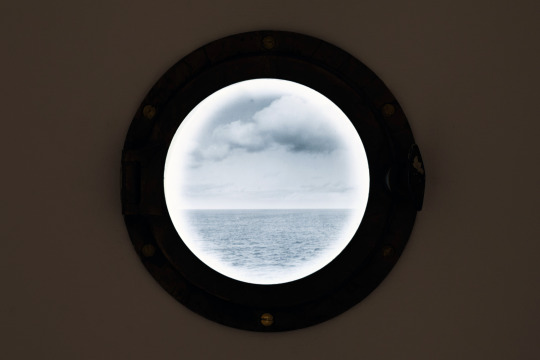
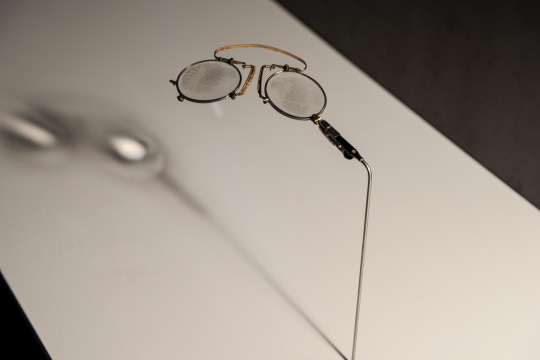



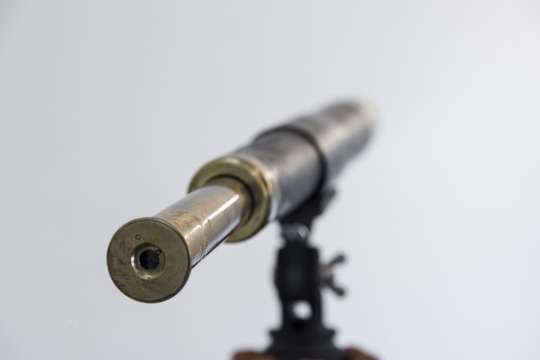
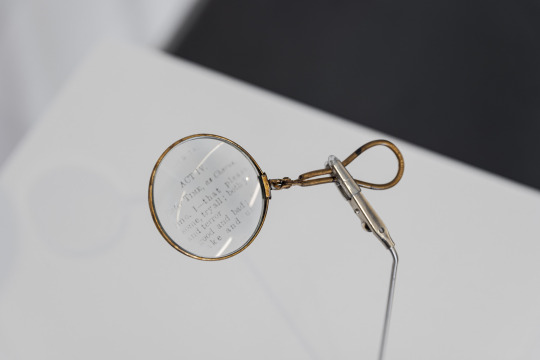

Unknown Image Series no.8 #2 鈴木のぞみ「Light of Other Daysー土星の環」 Nozomi Suzuki "Light of Other Days - The Rings of Saturn"
void+では、Unknown Series no.8 #2 鈴木のぞみ個展「Light of Other Days-土星の環」を7月31日より開催いたします。本シリーズ2回目となる鈴木は、何気ない日常の事物に潜む潜像のような記憶の可視化を、写真の原理を通して試みています。その作品は静かで控えめでありながら、写真の本質をとらえた独自の構造と豊かさ、広がりがあり、見る人の想像力に働きかけます。
近年は、東京都写真美術館、埼玉県立近代美術館、MOTサテライトなどの国内の主要な美術館や場で発表を続け、昨年は、ポーラ美術振興財団在外研修員としてイギリスのロンドンとベルファストに滞在していました。この地で鈴木が出会ったアンティークの眼鏡や舷窓、そして、ベルファスト出身のSF作家であるボブ・ショウやイギリスを旅したドイツの作家W・G・ゼーバルトの書物からインスピレーションを受けた本展は、帰国後初の個展となります。
また、今回は、埼玉県立近代美術館学芸主幹の梅津元氏をゲストに迎え、作家にメールインタビュー*を行います。Unknownシリーズにおいては初の試みとなります。この記録はvoid+のHPで後日発表予定ですので、個展をご覧になるとともに、ぜひお読みくださいますようお願いいたします。
(*大変申し訳ございませんが、予定されていたトークイベントは、感染症流行のため中止となりました)
ーーーーーーーーーーーーーーーーーーーーーーーーーーーーーーーーーーー
<展覧会概要>
■タイトル:Unknown Image Series no.8 #2 鈴木のぞみ「Light of Other Days-土星の環」 ■会期:2020 年7月31日(金)— 8月21日(金)14:00-18:00 ■メールインタビュー:鈴木のぞみ+ 梅津元(埼玉県立近代美術館学芸主幹/芸術学) ■会場:void+ 東京都港区南青山3-16-14, 1F ■定休日:日、月、祝日 ■お問合せ:[email protected]
[主催]void+/Unknown実行委員会 [企画]カトウチカ [協力]rin art association/Pola Art Foundation
ーーーーーーーーーーーーーーーーーーーーーーーーーーーーーーーーーーー
Light of Other Days -土星の環 について
イギリスで過ごした日々の中で、写真の黎明期とともに発展したヴィクトリア朝とそれ以降の土着的な文化において、人々のまなざしを拡張した事物の潜在性を顕在化したいと思索していた。
展覧���タイトルの《Light of Other Days》は、ベルファスト出身のSF作家であるボブ・ショウによって1966年に書かれた短篇から引用している。物語の中に登場する、過去の光を遅れて届ける魔法のガラスである〈スローガラス〉という発明品は、それ自身が写真そのもののようである。
《土星の環》は、晩年を東イングランドで過ごしたドイツの作家 W・G・ゼーバルトによって1995年に書かれた書物のタイトルから引用した。脱線と連想を繰り返しながら、ヨーロッパ帝国主義の史実と文学への思索による断片が、イギリスの地を巡礼するゼーバルトの足どりとともに散りばめられ、記憶を想起するような書物だ。
私はこれらの書物を参照し、事物に残された痕跡からその来歴を辿ることを試みた。かつての人々の営みへと想いを馳せ、事物に宿る記憶のようなまなざしを写真によって可視化してみたい。〈スローガラス〉を通してそれぞれの事物が孕む小さな物語と私たちのまなざしが交叉し、新しい物語が紡がれる場となることを願って。
(2020年6月 鈴木のぞみ)
ーーーーーーーーーーーーーーーーーーーーーーーーーーーーーーーーーーー
まなざしの余白
展示空間には、円形のまなざしが浮遊している。窓、眼鏡、ルーペ、カメラ・オブスクラ、望遠鏡、そして人間の双眸……。
それらは何を見てきたのか。鈴木の紡ぎだす空間は、それ自体がカメラの構造を孕んでもいる。そこでは、時間と光に関わる事物のイメージ、形、物語が浮遊しながら連鎖する。
本来、生命も意思も持たないはずの事物が、感光性を与えられ、身体とまなざしを獲得する。客体であったはずのものが主体となる。その透明なまなざし。これらの蒐集された事物を使っていた人々は、すでにこの世界にいない。だが、人とは別の時間を蓄積してきた事物はまだそこに残っていて、かつてそこにあった風景や物語のかけらを写し出し、見る人の感情を揺さぶる。過去の光と影、言葉を写した一片は、人々を果てしない時間の旅に誘う。空間を訪れた人々の間で共有されながら、その内面で個々に変化する物語。小さき事物のまなざしの余白は、見えざるイメージと物語で満ちている。
死者、生者、事物、空間、時間、光、あらゆるまなざしと記憶が交錯する場で、私たちはその中の一粒となり、全体ともなるのだ。
カトウチカ(Unknown Series キュレーター)
ーーーーーーーーーーーーーーーーーーーーーーーーーーーーーーーーーーー
鈴木のぞみ SUZUKI Nozomi
1983年 埼玉県生まれ。東京藝術大学大学院 美術研究科 博士後期課程在学中。何気ない日常の事物に潜む潜像のような記憶の可視化を、写真の原理を通して試みている。現前しているが不在であるという性質を持つ写真を事物に直接定着することで、写真に触覚的な身体のようなものが付与され、過ぎ去りゆく時をいまここに宙づりにする。近年の主な展示に「あした と きのう の まんなかで」(はじまりの美術館、2019)、「MOTサテライト2018 秋 うごきだす物語」(清澄白河、2018)、「無垢と経験の写真 日本の新進作家vol.14」(東京都写真美術館、2017)、「NEW VISION SAITAMA 5 迫り出す身体」(埼玉県立近代美術館、2016)など。受賞歴多数。平成30年度ポーラ美術振興財団在外研修員としてイギリスにて研修。
———
梅津元 UMEZU Gen
埼玉県立近代美術館学芸主幹。専門は芸術学。同館での主な企画(共同企画を含む)に「DECODE/出来事と記録ーポスト工業化社会の美術」(2019)、「版画の景色 現代版画センターの軌跡」(2018)、「生誕100年記念 瑛九展」(2011)、「アーティスト・プロジェクト:関根伸夫《位相ー大地》が生まれるまで」(2005)、「ドナルド・ジャッド 1960-1991」(1999)、「<うつすこと>と<見ること>ー意識拡大装置」(1994)など。ギャラリーαMでの企画に「トランス/リアルー非実体的美術の可能性」(2016-17)がある。美術手帖や展覧会カタログなどに寄稿多数。
:::::::::::::::::::::::::::::::::::
<Unknown Image Series no.8 展覧会>
未知のイメージを創出する
イメージが持つ力と本質を探り、未知のイメージを創出する。
この世界においては、日々膨大なイメージが生まれては消えていくが、ときに稀有なイメージが出現する。今回の参加アーティストは、三田村光土里、横山奈美、鈴木のぞみ、山元彩香、庄司朝美の5名。連続する個展の形式をとる。各回のトークイベントとテキストのゲストには、光田由里、梅津元、飯田志保子、中村史子、中尾拓哉らを招く。 シリーズの終了後にはバイリンガルの記録集を制作し、本というメディアにおいても新たな表現の展開をはかっていく。
女性たちがつくるイメージ
Unknown Imageのシリーズは、イメージをテーマに、今、注目すべきアーティスト一人一人の作品とその世界を深く掘り下げ、その可能性をさらに見出していく場でもある。今回は、はからずも全員が女性アーティストとなった。
初回の山元彩香は、言葉の通じない国で神秘的なまでの美しさと暴力性をもつポートレートを撮影する。被写体の名前や意識すら剥ぎ取り、空の器にしようとしても残るものとはなんなのか。鈴木のぞみは、写真や時間の原理の静かな探求者である。生命なき事物に「視線」と「記憶」を出現させ、写真に身体のようなものを与える。横山奈美は、絵画の大きな歴史と私的な小さな歴史を交錯させ、日常の取るに足らないものたちの美しさや、明るく輝くものの背後にある存在を描き出す。庄司朝美の描線は、舞台のように見る人を引き込む物語性と、生命と死のエネルギーに満ちた身体的絵画空間をつくり出す。三田村光土里は、このシリーズではもっともキャリアの長いアーティストである。ごく私的なイメージや言葉の数々は、写真、映像、オブジェ、ドローイング、インスタレーションとなるが、それらは個人の物語やアートの枠組みを越えて普遍性を帯び、見る人の心を捉えて離さない。そして、ゲストは性別や年代は幅広いが、いずれも芸術の発生の現場において、極めて優れた批評の言葉を紡いできた方々である。
美術史において、かつて周縁の存在であった女性アーティストたちは、今、最先端にいる。彼女たちがつくるイメージはどのようなものなのか。なぜそれを生み出さねばならなかったのか。参加者の出自やキャリア、テーマ、歴史や現在の状況との向き合い方、その目指すところも様々である。だが、彼女たちの存在と彼女たちがつくるイメージは、それぞれに強く鮮やかだ。その未知のイメージは見る人を深く静かに揺るがし、世界に多様な変化を生み出す力ともなっていくだろう。
カトウチカ
<Unknown Image Series no.8 今後のスケジュール>
#3|庄司朝美 [会場/会期]未定
ゲスト:光田由里(DIC川村記念美術館学芸員) *開催を予定していたHIGURE 17-15 casですが、新型コロナウイルス感染症を考慮した上、当面の間休廊することとなりました。新しい会場と会期が決まり次第、発表いたします。
#4|横山奈美 [会場]void+ 2021年5月(予定) ゲスト:飯田志保子(キュレーター)
#5|三田村光土里 [会場]HIGURE 17-15 cas 2021年(予定) ゲスト:中尾拓哉(美術評論家)
:::::::::::::::::::::::::::::::::::
Unknown Image Series no. 8 #2 “Light of Other Days – The Rings of Saturn,” an exhibition of work by Suzuki Nozomi, will open at void+ on July 31. In this second exhibition in the series, Suzuki endeavors to render visible by means of photographic principles the memories, akin to latent images, that dwell in mundane, everyday objects. These works may be calm and understated, but their unique structure, richness, and expansiveness, which together capture the essence of photography, mean they are sure to fire the viewer’s imagination.
Recent years have seen Suzuki present work in major museums and other venues around Japan, including the Tokyo Photographic Art Museum, Museum of Modern Art, Saitama, and MOT Satellite, and last year she also spent time in London and Belfast on a POLA Art Foundation overseas study grant. This exhibition inspired by the antique spectacles, portholes and similar objects Suzuki encountered during her stay in the UK, plus books by Belfast sci-fi writer Bob Shaw, and the German author W.G. Sebald, who traveled around Britain, will be her first solo show since returning to Japan.
In a first for the Unknown series, there will also be an email interview* with the artist, courtesy of Umezu Gen, curator at the Museum of Modern Art, Saitama. A transcript of the interview will be posted at a later date on the void+ website, as an informative accompaniment to the exhibition.
*We regret the scheduled talk event has been cancelled as a measure against COVID-19 transmission.
ーーーーーーーーーーーーーーーーーーーーーーーーーーーーーーーーーーー
<Exhibition>
■Title: Unknown Image Series no.8 #2 SUZUKI Nozomi “Light of Other Days-The Rings of Saturn” ■Exhibition Period: 2020.7.31(fri) — 8.21(fri) 14:00-18:00 ■Email Interview: SUZUKI Nozomi + UMEZU Gen(Curator, The Museum of Modern Art, Saitama / Art Studies) ■Venue: void+ 3-16-14, 1F, Minamiaoyama, Minato-ku, Tokyo ■Closed: Sundays, Mondays and holidays ■Inquires: [email protected]
Organized by void+/ Unknown executive committee Curated by KATO Chika In cooperation with rin art association / Pola Art Foundation
ーーーーーーーーーーーーーーーーーーーーーーーーーーーーーーーーーーー
About “Light of Other Days – The Rings of Saturn”
During my time in the UK, I mused on the idea of revealing latent images of objects that have served to expand the human gaze, in the context of the vernacular culture of Britain since the Victorian era, a period in which the nation’s development coincided with the dawn of photography.
The title of the exhibition, “Light of Other Days,” is taken from a short story written by Belfast sci-fi author Bob Shaw in 1966. The magical “slow glass” of the story, an invention that delivers delayed light from the past, could for all the world be photography itself.
“The Rings of Saturn,” meanwhile, is borrowed from the title of a 1995 work by German author W. G. Sebald, who spent his later years in the east of England. Sebald’s English pilgrimage is accompanied by scattered snippets of thought; meditations on the true history of European imperialism, and on literature, laced with digressions and connections, as if recalling memories.
Using these works for reference, I attempted to trace the history of objects from the marks left on them. Turning my thoughts to the endeavors of past people, my aim is to use photography to render visible the memory-like gaze that dwells in objects, in the hope that through “slow glass” the little narratives filling each of these objects will intersect with our gaze, and create settings for the spinning of new stories.
(SUZUKI Nozomi, June 2020)
ーーーーーーーーーーーーーーーーーーーーーーーーーーーーーーーーーーー
A blankness of gaze
Circular gazes—windows, eyeglasses, magnifiers, camera obscura, telescopes, and pairs of human eyes—float in the gallery space.
What have they seen? The very space spun by Suzuki also harbors the structure of a camera, images, shapes and narratives of things related to time and light, floating and forming links therein.
Things originally devoid of both life and thought are given photosensitivity, and acquire body and gaze. What should be objects, become subjects, all clear gazes. The people who used these collected items are no longer of this world. Yet, accumulating a different time from humans, they remain, describing pieces of the landscapes and narratives once there, and stirring complex emotions in those who see them. Fragments portraying the light and shadow, the words, of the past, invite people on an endless journey through time. Stories are shared among those who visit the space, each changing within each visitor. The blank gaze of these small items is suffused with unseen images and narratives.
In a place where dead and living, objects, space, time, light, all manner of gazes and memories intersect, we constitute just another tiny piece, and also, the whole.
KATO Chika (Unknown Series curator)
ーーーーーーーーーーーーーーーーーーーーーーーーーーーーーーーーーーー
SUZUKI Nozomi
Born 1983 in Saitama, Japan. Currently in the doctorate course of Intermedia Art at Tokyo University of the Arts. Suzuki Nozomi attempts to visualize, through the principles of photography, the memories resembling latent images submerged in innocuous everyday objects. Fixing photographs, which have the characteristic of being present yet absent, directly to objects, she assigns photographs something like a tactile body, suspending passing time in the now. Recent group exhibitions include “In the middle of tomorrow and yesterday” (Hajimari Art Center, 2019), “MOT Satellite 2018 Fall: To Become a Narrative” (Kiyosumi-Shirakawa, 2018), “Photographs of Innocence and of Experience: Contemporary Japanese Photography vol.14” (Tokyo Photographic Art Museum, 2017), and “New Vision Saitama 5: The Emerging Body” (The Museum of Modern Art, Saitama, 2016). Among a number of other awards, she was recipient of the POLA Art Foundation Grant for Overseas Research in 2018, under which she studied in the UK.
————
UMEZU Gen
Curator, The Museum of Modern Art, Saitama, specializing in art studies. Exhibitions he has organized/co-organized at MOMAS include ”DECODE / Events & Materials: The Work of Art in the Age of Post-Industrial Society” (2019), “A View of Prints: Trajectory of the Gendai Hanga Center” (2018), “100th Birth Anniversary, Q Ei” (2011), “Artist Project: Toward the Emergence of Sekine Nobuo’s Phase – Mother Earth” (2005), “Donald Judd 1960–1991” (1999), and “Visualization in the End of the 20th Century” (1994). He also organized as guest curator the Gallery αM series “Trans / Real: The Potential of Intangible Art” (2016-17). He has contributed a great number of essays to the art magazine Bijutsu Techo, as well as to art catalogues and books.
:::::::::::::::::::::::::::::::::::
<Unknown Image Series no.8 exhibitions>
Creating unknown images
Exploring the power and essence possessed by images, to create unknown images.
A vast number of images are generated every day in this world, only to vanish, but just occasionally, some extraordinary images do emerge. The artists in this eighth Unknown exhibition are Mitamura Midori, Yokoyama Nami, Suzuki Nozomi, Yamamoto Ayaka, and Shoji Asami, who will stage consecutive solo shows. Those serving as guests for the talk events for each of these shows, and providing the texts, will include Mitsuda Yuri, Umezu Gen, Iida Shihoko, Nakamura Fumiko, and Nakao Takuya. After the series is finished a bilingual document will be produced, thus extending the exhibition into another form of expression: that of the book.
Images made by women
The Unknown Image series is also an opportunity to delve deeply into the individual work of some of today’s most noteworthy artists and their worlds, identifying further possibilities for each. This time, albeit not by design, all the artists are female.
Yamamoto Ayaka, featured in the first of the exhibitions, travels to countries where she does not speak the language, and takes portrait photographs suffused with a beauty and violence verging on the mystical. What is it that remains even when everything is stripped from her subjects, down to their names and consciousness, in an attempt to turn them into empty vessels? Suzuki Nozomi is a quiet explorer of the principles of photography and time. Endowing non-living things with a “gaze” and “memory” she gives her photos something like a physical body. Yokoyama Nami blends the vast history of painting and small personal histories to depict the beauty of everyday, insignificant things and what lies behind the bright and shiny. Shoji Asami’s lines create a narrative quality that draws the viewer in like a stage, and a corporeal painterly space suffused with the energy of life and death. Mitamura Midori is the artist in this series with the longest career. Her many very personal images and words are presented in photographs, videos, objects, drawings and installations, that go beyond individual stories or the confines of art, taking on a universal quality that irrevocably captures the heart of the viewer. The guests, meanwhile, are a varied lineup in terms of age and gender, but all individuals on the frontlines of art creation, of superb critical talent.
Once a marginal presence in art history, female artists are now at its cutting edge. What kind of images do these artists make? Why have they felt the need to produce them? The artists participating in these exhibitions have different origins and career trajectories, different ways of engaging with their themes, with history and current circumstances, and different aims. Yet their presence, and the images they create, are without exception strong and vibrant. Their unknown images will quietly shake the viewer to the core, and likely serve as a force for many types of change in the world.
KATO Chika
ーーーーーーーーーーーーーーーーーーーーーーーーーーーーーーーーーーー
<Unknown Image Series no.8 exhibitions schedule>
SHOJI Asami Venue and period: TBD Guest: MITSUDA Yuri (Curator, Kawamura Memorial DIC Museum of Art) *HIGURE 17-15 cas, where the exhibition was to be held, is closed for the time being in light of the COVID-19 pandemic. The new dates and venue for the show will be announced as soon as they are determined.
YOKOYAMA Nami @ void+ May 2021 (TBD) Guest: IIDA Shihoko (Curator)
MITAMURA Midori @ HIGURE 17-15 cas 2021 (TBD) Guest: NAKAO Takuya (Art critic)
写真:森政俊 2枚目の舷窓の写真:鈴木のぞみ
6 notes
·
View notes